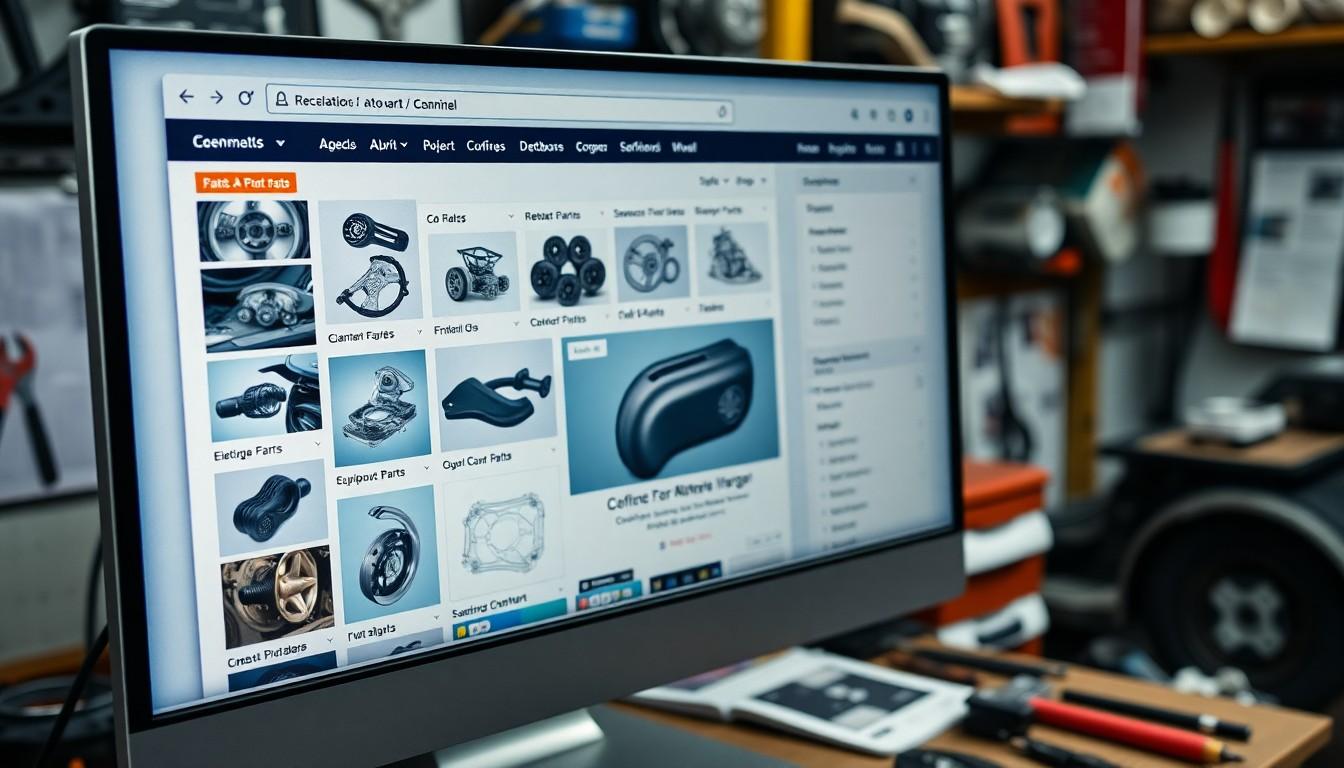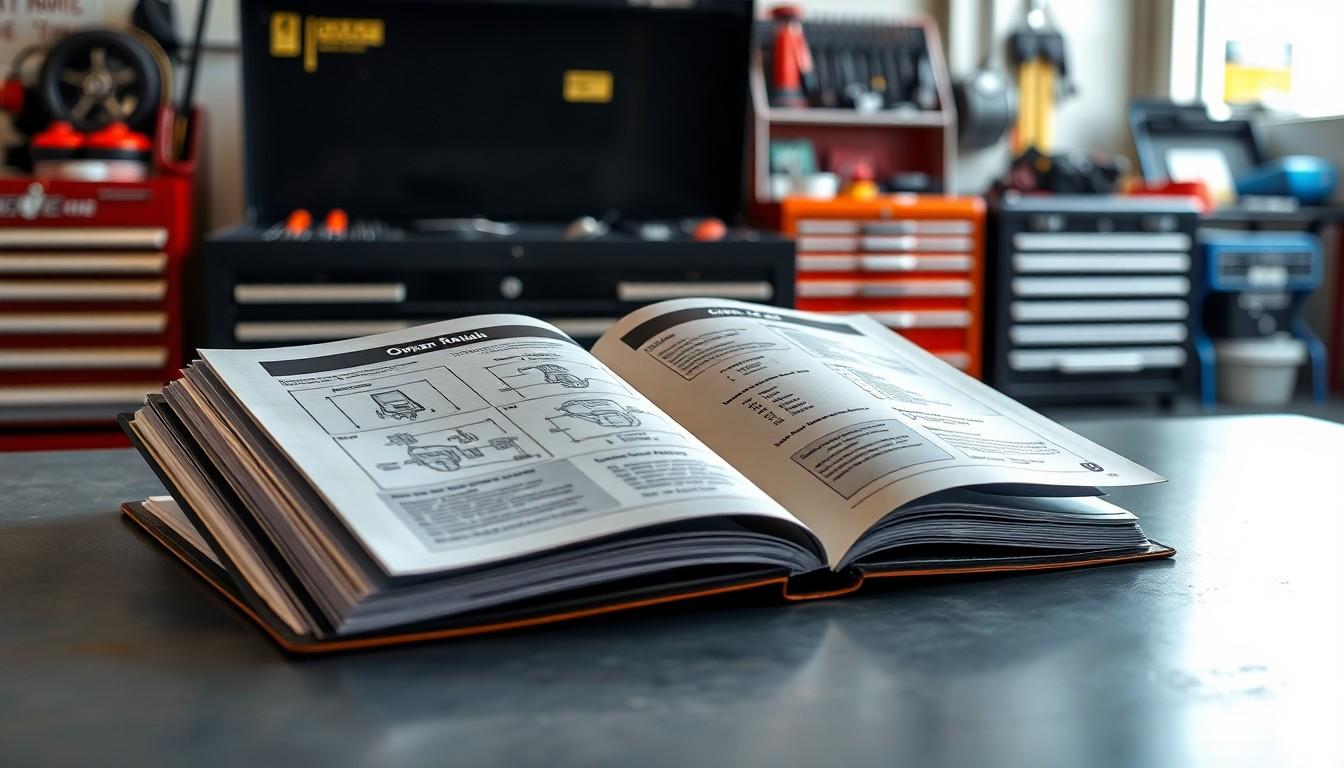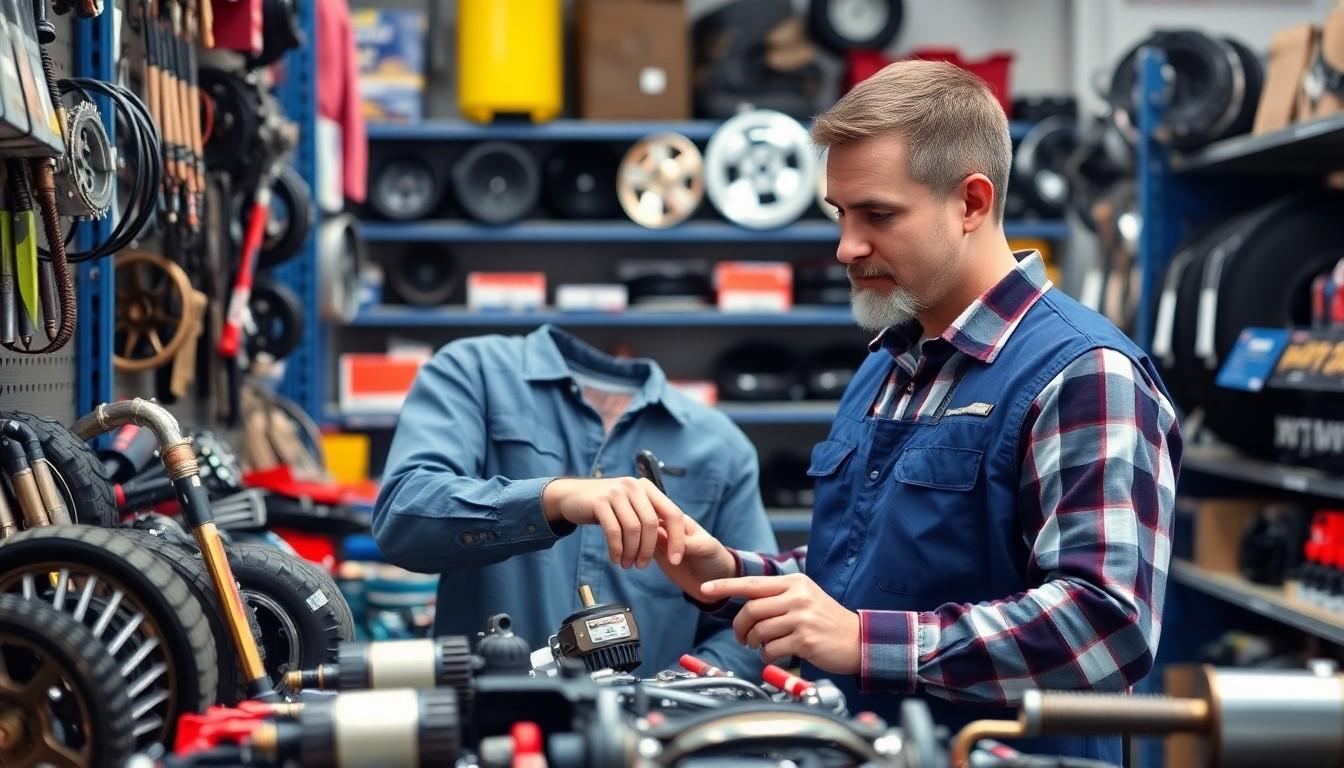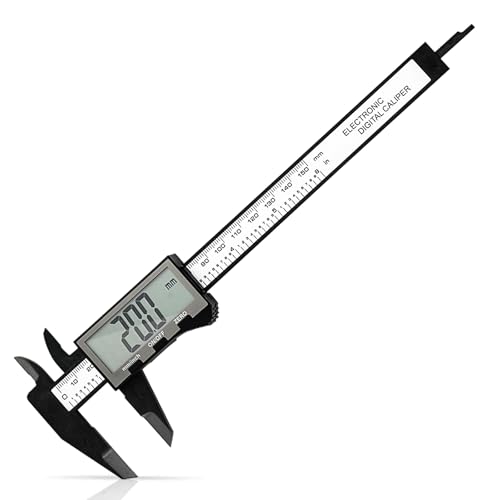Finding the right parts for your car doesn’t have to be a frustrating experience. We’ve helped thousands of vehicle owners navigate this process with confidence and want to share our expertise with you. Whether you’re a DIY enthusiast or simply looking to save money on repairs, knowing how to source the correct components is essential.
With countless options available online and in physical stores, it’s easy to become overwhelmed. We’ll guide you through the most reliable methods to identify and purchase exactly what your vehicle needs. From decoding your VIN number to understanding compatibility across different makes and models, our straightforward approach will save you time and prevent costly mistakes.
Understanding Your Car’s Specifications
Knowing your car’s exact specifications is essential for finding compatible parts. These details serve as your roadmap when handling auto parts stores or online marketplaces and ensure you’re purchasing components specifically designed for your vehicle.
Vehicle Identification Number (VIN)
Your VIN is a 17-character code that contains critical information about your car’s identity. It’s typically located on the driver’s side dashboard visible through the windshield, driver’s side door jamb, or in your vehicle registration documents. Each character in the VIN represents exact details about your car including the manufacturer, model type, engine specifications, and production year. Auto parts retailers use this code to determine exactly which components are compatible with your vehicle. Many online parts catalogs feature VIN lookup tools that instantly narrow down compatible parts based on this unique identifier. Taking a clear photo of your VIN or writing it down accurately provides the most reliable way to ensure you’re ordering the correct parts.
Make, Model, and Year Information
Your car’s make, model, and year create a foundation for parts compatibility research. The make refers to the manufacturer (Ford, Toyota, Honda), while the model identifies the exact vehicle line (Mustang, Camry, Civic). Production year is equally important as manufacturers frequently change designs and specifications between model years. Even subtle variations between model years can affect parts compatibility – a 2018 Honda Accord may require different brake pads than a 2019 model. Trim levels (SE, LX, Sport) often indicate additional specification differences that impact parts selection. This information appears on your vehicle registration documents, insurance cards, and owner’s manual. When searching for parts online or at stores, entering these three key details first narrows your options to potentially compatible parts before considering more exact aspects like engine size or transmission type.
Using Online Parts Databases

Online parts databases serve as comprehensive resources for finding exact car components with precision and efficiency. These specialized platforms allow you to search through extensive inventories using various parameters to locate exactly what you need for your vehicle.
Popular Online Databases
Several notable online databases make finding the right car parts significantly easier. Car-Part.com offers an extensive searchable inventory where you can filter results based on part numbers, descriptions, and vehicle specifications. Auto Value provides a user-friendly interface that helps narrow down compatible parts based on your vehicle’s details. PartSouq features a robust database that lets you search for components using multiple criteria including part numbers, vehicle make and model, and your location.
These platforms typically include filtering options for brand preferences, price ranges, and local availability. Many databases display detailed product information such as specifications, compatibility charts, and customer reviews to help confirm you’re selecting the correct part. The search functionality often includes the ability to cross-reference part numbers across different manufacturers, ensuring you find exact matches or suitable alternatives.
Manufacturer-Exact Resources
Manufacturer websites offer direct access to genuine OEM parts designed specifically for your vehicle. Many car manufacturers maintain online catalogs where you can search for components using your VIN or vehicle details for guaranteed compatibility.
PartSouq specializes in original equipment manufacturer parts for exact brands including Mitsubishi, Subaru, Honda, and Kia. Their brand-exact sections let you navigate through detailed parts diagrams that show exactly how components fit together. Authorized dealer websites typically feature parts departments where you can order genuine components with confidence in their fit and quality.
OEM catalogs often include exploded-view diagrams that display how assemblies fit together, helping you identify exactly which part you need. These resources typically offer the benefit of manufacturer warranties and quality assurances not always available with aftermarket alternatives.
Universal Auto Parts Websites
Large-scale auto parts retailers offer extensive inventories covering virtually all vehicle makes and models. CarParts.com stocks over 1 million different car parts across categories including collision, maintenance, upgrade parts, and accessories. RockAuto maintains a fast, DIY-friendly online catalog with competitive pricing and full manufacturer warranties.
These universal sites typically feature intuitive vehicle selectors where you enter your make, model, and year to instantly filter their entire inventory for compatible parts. Many include helpful features like parts comparison tools, installation guides, and customer reviews that provide additional context about fit and quality. The breadth of selection on these platforms often includes OEM, aftermarket, and performance options at various price points to suit different budgets and needs.
Most universal auto parts websites offer customer service support to help with technical questions about compatibility or installation challenges you might encounter. Their broad inventories frequently include hard-to-find components for older or less common vehicle models that manufacturer resources might no longer support.
Consulting Your Owner’s Manual

Your owner’s manual serves as an invaluable resource for finding the right parts for your car. This often-overlooked document contains essential information exact to your vehicle that can significantly simplify your parts search process.
Locating Component Information
The owner’s manual typically includes sections dedicated to vehicle specifications and maintenance schedules that identify key components. These sections contain diagrams highlighting major parts locations, their recommended replacement intervals, and sometimes even part numbers for common replacement items like filters and bulbs. Many owner’s manuals feature a comprehensive index where you can quickly locate information about exact systems or components by searching alphabetically.
Understanding Fluid Specifications
Your manual precisely identifies the correct fluids your vehicle requires, eliminating guesswork when purchasing replacements. Inside, you’ll find detailed specifications for engine oil viscosity, transmission fluid type, coolant formulation, and brake fluid grade. These specifications often include manufacturer-approved brands or standards that ensure optimal performance and longevity for your vehicle’s systems.
Finding Maintenance Schedules
The maintenance schedule section outlines when exact parts need inspection or replacement based on mileage or time intervals. This information helps you anticipate when you’ll need certain parts and prepare accordingly. Maintenance tables typically categorize service items by system (engine, brakes, electrical) and indicate whether parts should be inspected, adjusted, or replaced at each service interval, giving you advance notice for necessary purchases.
Decoding Part Numbers
Owner’s manuals occasionally list part numbers for commonly replaced items like filters, belts, and bulbs. These original equipment manufacturer (OEM) numbers can be used to search online parts catalogs or presented to parts store associates to find exact matches. When your manual doesn’t provide exact part numbers, it often includes the specifications needed to cross-reference compatible aftermarket alternatives, such as dimensions, ratings, or capacities.
Visiting Auto Parts Retailers

Stepping into an auto parts store provides direct access to knowledgeable staff who can guide you through finding the right components for your vehicle. These retail locations offer personalized service that online shopping simply can’t match.
Benefits of In-Person Assistance
Auto parts retailers offer immediate expert help when you’re uncertain about the exact part you need. Staff members can cross-reference part numbers on the spot to verify compatibility with your exact make and model. They’ll examine old parts you bring in, quickly identifying wear patterns or damage that might indicate additional issues requiring attention. In-person visits eliminate shipping delays, allowing you to complete repairs faster with parts available for same-day pickup. Physical stores also permit hands-on comparison of different brands and quality levels, helping you make more informed decisions about durability versus cost.
Getting Expert Recommendations
Auto parts store employees typically possess extensive knowledge about various vehicle systems and can suggest optimal components for your exact situation. They’re trained to ask targeted questions about your driving habits, vehicle condition, and budget constraints to recommend appropriate parts. These professionals often share installation tips or alert you to common pitfalls with certain repairs, potentially saving you important time and frustration. Many store associates can direct you to supplementary items you might need but hadn’t considered, such as specialized tools, gaskets, or fluids required to complete your repair properly. Their expertise extends beyond parts selection to providing valuable maintenance advice that could prevent future breakdowns and extend your vehicle’s lifespan.
Working With Mechanics and Dealerships

Professional mechanics and dealership service departments offer valuable expertise when sourcing car parts. They’ve developed specialized knowledge that helps identify the exact components your vehicle needs while ensuring proper fitment and compatibility.
Consulting with Mechanics
Mechanics provide practical insights based on hands-on experience with various vehicle makes and models. They’re familiar with common failure points across different vehicle systems and can recommend exact brands that perform reliably for your particular application. Most mechanics have extensive experience installing both OEM and aftermarket components, giving them practical knowledge about which options work best in different situations. Their expertise becomes especially valuable when diagnosing complex issues where multiple parts might be causing symptoms.
Dealership Parts Departments
Dealership parts departments maintain direct connections with vehicle manufacturers, ensuring access to genuine OEM components. These departments employ specialists who can quickly identify the correct part using your VIN number, eliminating guesswork from the selection process. Dealerships typically stock common maintenance items for your exact make and model, offering immediate availability for urgent repairs. Though dealership prices may exceed aftermarket alternatives, the parts often come with manufacturer warranties that protect your investment against premature failure.
When to Choose OEM vs. Aftermarket Parts
OEM parts match the original components installed at the factory, providing perfect fitment and consistent performance. These components typically excel in safety-critical systems like brakes, airbags, and structural elements where precise specifications matter most. Aftermarket parts offer cost savings ranging from 20-70% compared to OEM equivalents, making them attractive for budget-conscious repairs on older vehicles. Many aftermarket manufacturers produce components that meet or exceed OEM specifications while introducing improvements that address known weaknesses in the original design.
Performance upgrades typically come from the aftermarket sector, with companies developing specialized parts that enhance exact aspects of vehicle operation. For vehicles under warranty, using OEM parts for repairs ensures continued warranty coverage, whereas aftermarket components might void certain warranty protections depending on your manufacturer’s policies. The best choice eventually depends on your exact needs—OEM parts provide peace of mind for newer vehicles, while quality aftermarket components offer excellent value for older cars with common repair needs.
Researching Compatibility Before Purchasing

Researching compatibility is essential before buying any car part to ensure a perfect fit for your vehicle. Proper research prevents wasted time, money, and the frustration of returning incompatible parts.
Cross-Reference Part Numbers
Cross-referencing part numbers serves as the most reliable method to confirm compatibility with your exact vehicle make and model. Online resources like manufacturer websites provide detailed catalogs where you can input your part number to find exact matches or compatible alternatives. Many auto parts retailers offer cross-reference tools on their websites that let you search using original part numbers to find equivalent options from different brands. Specialized databases such as ACES (Aftermarket Catalog Exchange Standard) and PIES (Product Information Exchange Standard) contain comprehensive cross-reference information used by industry professionals to verify compatibility across multiple manufacturers.
Use Online Databases
Online parts databases simplify the search process by filtering results based on your vehicle’s specifications. These powerful tools prompt you to enter your car’s year, make, model, and sometimes engine type or trim level to display only compatible components. Vehicle-exact databases eliminate guesswork by showing parts designed explicitly for your car’s specifications. Advanced filtering options in these systems let you further narrow results by brand preference, price range, or local availability, making it easier to find the exact part you need.
Check Parts Dealers’ Inventories
Parts dealers’ inventory systems offer a convenient way to locate compatible components without extensive manual research. Many salvage yards and auto parts suppliers maintain searchable online inventories that highlight parts compatible with your vehicle after entering your car’s details. Local dealers often connect their inventory systems with manufacturer databases, ensuring accurate compatibility information when you search by VIN or vehicle specifications. Physical visits to dealers also allow staff to check their inventory management systems for parts that might not be listed online but could be ordered specifically for your vehicle.
Consult Manufacturer and Retailer Resources
Manufacturer resources provide the most accurate compatibility information direct from the source. Official manufacturer websites typically include parts catalogs organized by vehicle model, production year, and component categories to help identify exact replacements. Knowledgeable staff at local auto parts stores can access specialized computer systems that cross-reference your vehicle with compatible parts across multiple brands. Manufacturer technical support lines offer another valuable resource when dealing with rare or complex components that require expert verification before purchase.
Reading Customer Reviews
Customer reviews reveal real-industry compatibility experiences that technical specifications might miss. Reviews from vehicle owners with the same make and model provide insights into how well particular parts actually fit and function in practice. Detailed reviews often mention exact years or trim levels where compatibility issues arose, helping you avoid similar problems with your purchase. Star ratings combined with written feedback help evaluate both the part quality and the accuracy of compatibility claims made by manufacturers or retailers. Forums dedicated to your exact vehicle model contain valuable discussions about parts compatibility, with experienced owners sharing which alternatives worked successfully for them.
Tools for Comparing Prices and Quality

Finding car parts at the best value requires effective comparison tools. Online marketplaces like Amazon, eBay, and specialized auto parts retailers offer comprehensive platforms where you can easily compare prices across multiple sellers. These sites typically include customer reviews, product specifications, and compatibility information all in one place.
Auto parts stores provide hands-on comparison opportunities with knowledgeable staff ready to explain differences between brands and quality tiers. Many local stores offer price matching policies, allowing you to leverage online research while supporting local businesses.
Dedicated price comparison tools streamline your search by aggregating listings from various retailers. These tools often include filtering options for condition (new, remanufactured, or used), shipping costs, and warranty terms to help you make truly informed decisions.
When comparing options, look for parts certified by respected industry organizations such as the Automotive Aftermarket Industry Association (AAIA) or the Certified Automotive Parts Association (CAPA). Certification indicates the part meets established quality standards and specifications.
Always check warranty terms before purchasing, as coverage periods vary significantly between retailers and manufacturers. Premium parts typically come with longer warranties, offsetting their higher initial cost through extended protection against defects.
Conclusion
Finding the right parts for your car doesn’t have to be overwhelming. Armed with your VIN number vehicle specifications and the right resources you’ll navigate auto parts shopping with confidence. Whether you choose OEM components for perfect fitment or aftermarket alternatives for cost savings the key is ensuring compatibility.
Online databases manufacturer websites and local auto parts stores all offer unique advantages in your search. Don’t underestimate the value of your owner’s manual or professional advice from mechanics when making decisions.
By leveraging price comparison tools reading customer reviews and understanding warranty terms you’ll not only find the correct parts but also get the best value. With these strategies you’ll save time money and frustration on your next car repair or maintenance project.
Frequently Asked Questions
How do I find my car’s VIN number?
Your VIN (Vehicle Identification Number) is a 17-character code typically found on the driver’s side dashboard (visible through the windshield), driver’s side door jamb, vehicle registration documents, insurance card, and owner’s manual. This unique identifier contains crucial information about your car’s manufacturer, model, engine specifications, and production year—essential details for finding compatible parts.
What’s the difference between OEM and aftermarket parts?
OEM (Original Equipment Manufacturer) parts are identical to those installed at the factory, ensuring perfect fit and function but at a higher cost. Aftermarket parts are made by third-party manufacturers, often more affordable and sometimes offering improved performance or durability. OEM parts are ideal for newer vehicles and critical systems, while quality aftermarket options provide good value for older vehicles.
Can I use parts from a different model year for my car?
Sometimes, but caution is needed. While certain parts may be compatible across model years, even minor design changes can affect fitment. Always cross-reference your specific vehicle information (VIN, make, model, year, and trim) with parts databases or consult with auto parts professionals before purchasing. Using incompatible parts can lead to poor performance, premature failure, or safety issues.
How can I verify if a part is compatible with my vehicle?
Verify compatibility by using your VIN number in online parts databases, consulting your owner’s manual for specific part numbers, using parts retailers’ vehicle selection tools, or cross-referencing part numbers between your original component and potential replacements. For absolute certainty, bring your old part to an auto parts store for comparison or consult with a professional mechanic familiar with your vehicle model.
Where’s the best place to buy car parts?
The best source depends on your priorities. Dealerships offer genuine parts with perfect fitment but at premium prices. Local auto parts stores provide immediate availability and expert advice. Online retailers often have lower prices and wider selection but require waiting for shipping. For rare or discontinued parts, salvage yards or specialized online marketplaces may be your best option. Consider factors like urgency, budget, and technical expertise.
How important is my car’s trim level when ordering parts?
Trim level is critically important for many components, as it can indicate significant differences in engine size, transmission type, braking systems, electronics, and other features between seemingly identical vehicles. Always include your specific trim level (found on your vehicle registration or owner’s manual) when searching for parts to ensure proper compatibility and avoid costly returns or installation problems.
Should I always buy the cheapest car part available?
No. While price is important, the cheapest option often compromises quality, durability, and performance. Consider the part’s importance to vehicle safety and reliability, expected lifespan, warranty coverage, and reviews from other users. For critical components like brakes or steering parts, prioritize quality and proper fitment over saving a few dollars. For maintenance items like filters, mid-range options often provide the best value.
What information do I need before shopping for car parts?
Before shopping, gather your vehicle’s complete identification information: VIN number, make, model, year, engine size, transmission type, and trim level. For replacement parts, note any part numbers from the original component. Understanding the specific symptom or problem you’re addressing helps ensure you get the right solution. Having this information ready saves time and reduces the chance of purchasing incompatible parts.

















